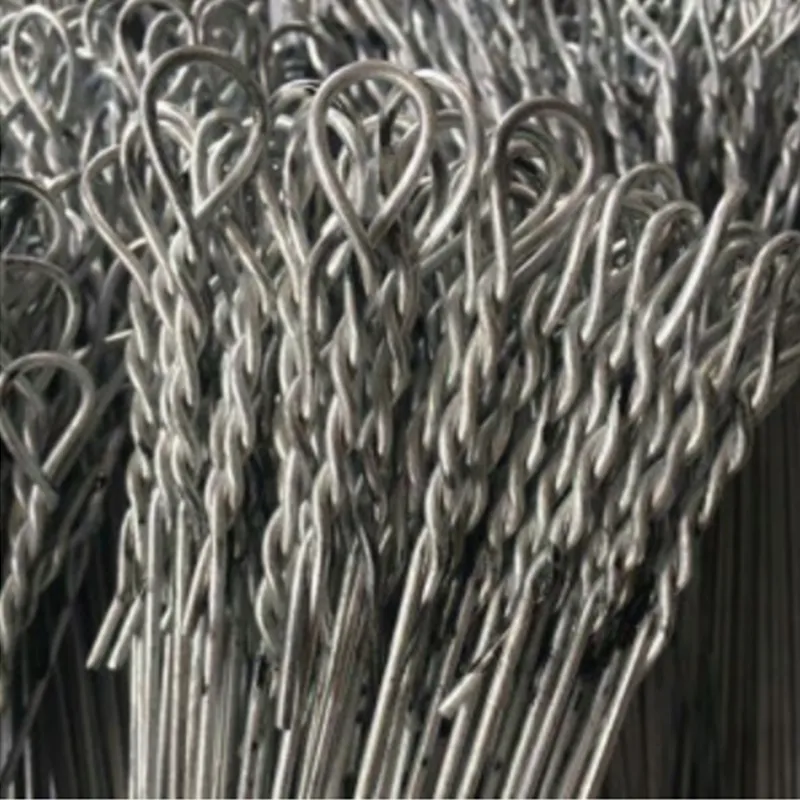-
 Phone:
Phone: -
 Email:
Email:

baling wire gauge
Understanding Baling Wire Gauge A Comprehensive Guide
Baling wire plays a pivotal role in various industries, particularly in agriculture, waste management, and recycling. The effectiveness of baling wire largely depends on its gauge, which refers to the wire's diameter. Understanding the concept of baling wire gauge is crucial for selecting the right type of wire for specific applications, ensuring efficiency, safety, and cost-effectiveness.
What is Baling Wire?
Baling wire is a type of wire used to bind bales of materials, such as hay, straw, or recyclable materials, into manageable packages. This wire is designed to withstand significant stress and strain, securely holding the bales together during storage and transportation. The strength and durability of the baling wire are essential because improperly tied bales can lead to material spillage, increased handling costs, and even safety hazards.
Understanding Wire Gauge
Wire gauge is a standardized system used to measure the diameter of wires. In the context of baling wire, the gauge number inversely indicates the wire’s thickness—the higher the gauge number, the thinner the wire. For example, a 10-gauge wire is thicker than a 14-gauge wire. The choice of gauge impacts several factors, including the wire's strength, weight, and suitability for different baling tasks.
Common Gauges and Their Applications
Baling wire typically comes in gauges ranging from 8 to 14, depending on the application. Here’s an overview of common gauges and their uses
- 8-gauge wire This is one of the thickest options available for baling wire and is primarily used for heavy-duty applications, such as binding large bales of hay or straw. Its high tensile strength allows it to withstand the weight of substantial materials without breaking.
baling wire gauge

- 9-gauge wire Slightly thinner than the 8-gauge, this wire is still robust enough for various bailing tasks, including heavier recyclables and agricultural products. It strikes a balance between strength and flexibility.
- 10-gauge wire Often used in commercial settings, 10-gauge baling wire is versatile enough for both agricultural and industrial applications. Its durability makes it suitable for binding products in warehouses, recycling facilities, and farms.
- 12-gauge wire This wire is commonly used for lighter applications, such as binding small bales of grass or straw. While it’s not as strong as its thicker counterparts, it is sufficiently sturdy for everyday farming needs.
- 14-gauge wire Generally the thinnest option for baling wire, the 14-gauge is suitable for very light applications. It can be used for small hobby farms or home gardening, where the load being tied is minimal.
Choosing the Right Gauge
Selecting the appropriate baling wire gauge is essential for ensuring the integrity of the bales. Thicker wires provide more strength and are ideal for heavy materials, while thinner wires are suitable for less demanding tasks. A mismatch between wire gauge and application can lead to potential failures, such as wire breakage or malformed bales, which could disrupt operations and incur additional costs.
It’s also essential to consider the environmental conditions, such as humidity and temperature, that might affect the wire's performance. For instance, outdoor applications may require rust-resistant options, while indoor uses might not impose such stringent demands.
Conclusion
In conclusion, understanding baling wire gauge is critical for anyone involved in the bailing process, from farmers to recycling professionals. The choice of wire affects the efficiency of operations and plays a significant role in the safety and quality of the bales produced. By tailoring the wire gauge to the specific requirements of the task at hand, users can maximize performance and ensure that their bales are secure during both storage and transportation. Ultimately, being knowledgeable about baling wire gauge not only fosters better operational practices but also promotes cost-effectiveness and safety across various industries.
-
Wire Mesh for Every Need: A Practical SolutionNewsJul.25,2025
-
Steel Fences: Durable, Secure, and Stylish OptionsNewsJul.25,2025
-
Roll Top Fencing: A Smart Solution for Safety and SecurityNewsJul.25,2025
-
Cattle Farm Fencing Solutions for Maximum SecurityNewsJul.25,2025
-
Affordable Iron Binding Wire SolutionsNewsJul.25,2025
-
Affordable Galvanized Wire SolutionsNewsJul.25,2025
-
Wire Hanger Recycling IdeasNewsJul.25,2025








